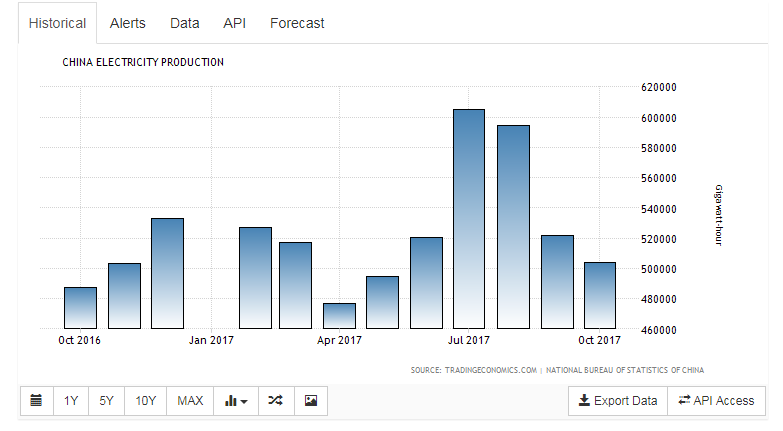China has long been a bastion of cryptocurrency mining supremacy due to a surplus of power in the country.
Some of the world’s largest mining groups, including the likes of Bitmain’s Antpool, BTCC, BW mining and BTC.com, operate large mining operations in the country.
Mining is the backbone of cryptocurrency, as computers are needed to validate transactions stored on the Blockchain by solving cryptographic algorithms. As cryptocurrencies continue to grow in popularity around the world, the demand on the network grows.
That means countries, where energy is cheap, are the most attractive to miners, as the process is power hungry, to say the least.
China’s has cut back on its energy production in the last year due to a surplus in their energy grid, as this graph from tradingeconomics.com shows, taking data from the National Bureau of Statistics of China.

This surplus has led to cheaper energy costs for consumers in China, which is a boon for mining operators in the country. However, China has previously threatened to cut off cheap power supply to miners based near hydroelectric power plants in the country.
According to Bloomberg, the People’s Bank of China (PBOC) intends to enforce local regulators to monitor and even restrict the power use of miners in certain regions of China.
A source says the PBOC outlined the plans at a closed-door meeting on Wednesday Jan. 3, as the country makes plans to transfer surplus energy to regions of the country that have higher electricity demands.
While the country has a surplus of energy, which has led to the curtailment of renewable energy harnessed by solar, hydroelectric and wind sources, the country has been staunch in its treatment of cryptocurrencies as a whole.
A ban on ICOs and cryptocurrency exchanges last year has made for harsh environment for virtual currency in the country.
Nevertheless mining operations continue, but if these regulations are enforced, operators could face strict controls in terms of energy use.
As Cointelegraph reported in December 2017, the combined energy use of global mining is more than many African countries, highlighting the energy needs of mining processes.
